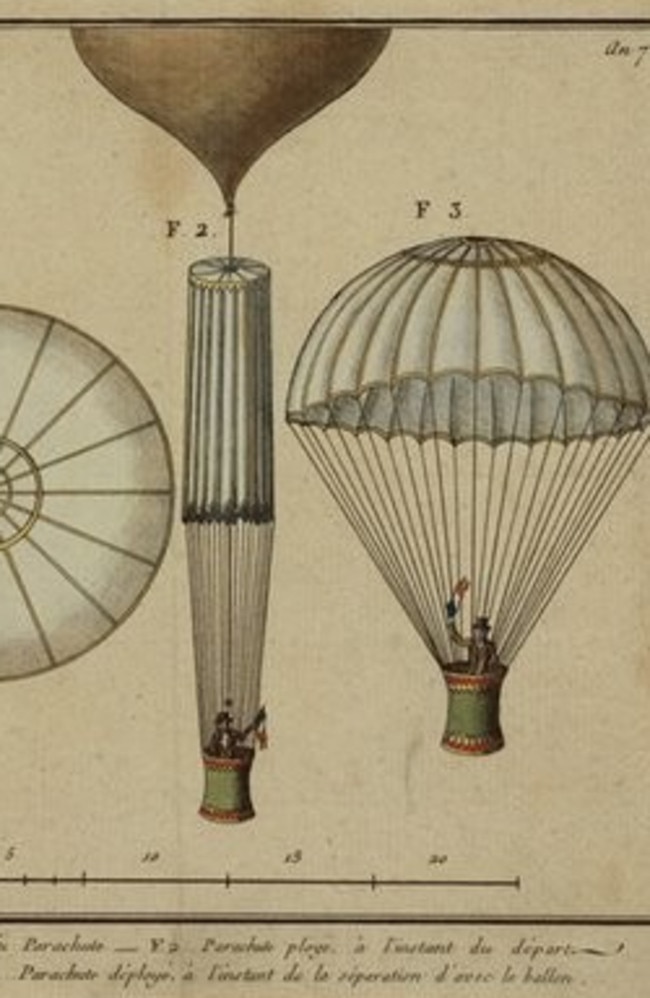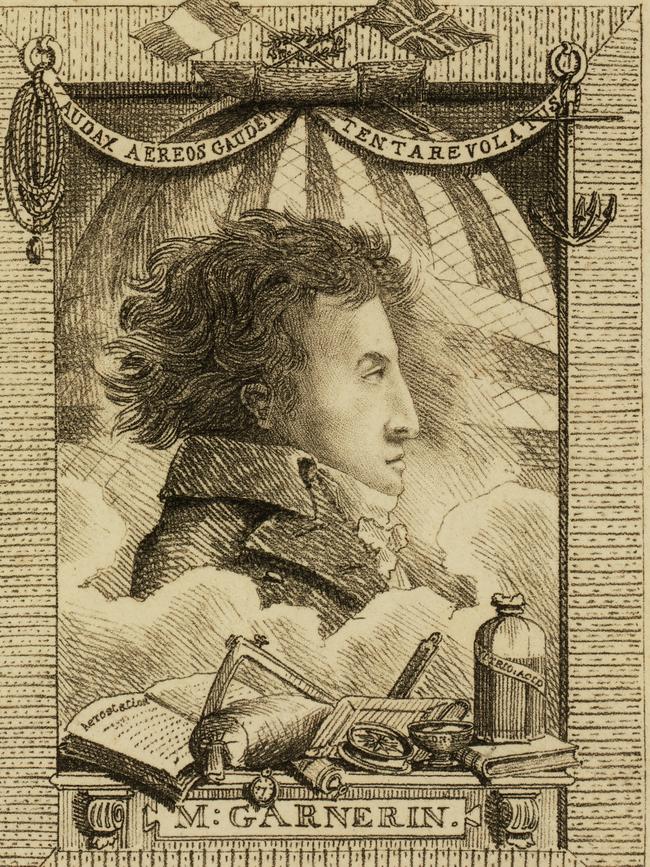French inventor Garnerin was the first to parachute from the air
A crowd of onlookers gasped as Andre-Jacques Garnerin severed a rope holding his basket to a balloon. But he plummeted safely back to earth thanks to a parachute he had invented
A crowd of curious onlookers gathered at the Parc Monceau in Paris on October 22, 1797, to watch as a man inflated a large balloon. Parisians had seen many hydrogen balloons capable of carrying people into the air before, since the Montgolfier brothers, Joseph-Michel and Jacques-Etienne, made their pioneering flight in 1783.
But this balloon had something different. Instead of a simple basket slung beneath there was contraption that looked like a large closed umbrella. Called a parachute, this was the creation of Andre-Jacques Garnerin, a balloonist, born 250 years ago today, a lighter than air flight specialist for over a decade.
During the French Revolution Garnerin had spent time in a Hungarian prison where he had dreamt of being able to jump to freedom out of his cell window and down one of the sheer cliffs outside the prison, but to land safely using a device that floated on the air to deliver him softly to the earth.
He was not the first person to think of it. Leonardo da Vinci had sketched designs back in the 15th century and Louis-Sebastien Lenormand had used a rigid framed contraption to land safely after jumping 4.3m from the tower of Montpellier Observatory in France. Lenormand had invented the word parachute. But Garnerin was about to be the first person to try using one to drop from a great height, using a balloon.
With help from his brother Jean-Baptiste-Olivier, Garnerin took the balloon aloft. When he reached about 1000m above the ground he cut a rope tethering his parachute to the balloon. His device opened up as it dropped, to the gasps and then applause of the crowd, and it began its slow descent.

On the way down the parachute tilted, swinging the basket beneath it from side to side. There were fears that it would tip over and spill Garnerin out into the air, from where he would plummet to the ground. But he landed safely, the basket bouncing briefly back into the air after it hit the ground. Garnerin climbed from the basket shaken, but unharmed, only to be violently ill — the first known case of motion sickness from flying. Garnerin had thereby cemented his place in history as the first man to make a successful parachute jump from an aircraft.
Garnerin was born in Paris on January 31, 1769. He was fascinated by balloons and the idea of flying from an early age, which led him to studying physics. Fortunately for him he came under the tutelage of chemist, mathematician and physicist Jacques Charles, who was also a balloonist. Garnerin made his first ascent in 1787 and in 1790 conducted experiments in the military applications of balloons, particularly for observation and spying on the enemy. His older brother and frequent collaborator, Jean-Baptiste-Olivier, worked for the French Revolutionary government as an army inspector, and the brothers proposed the formation of an army balloon corps. Garnerin helped organise the corps and was also appointed an army inspector. In 1793 he was captured by the British. He spent time in England before being handed over to England’s allies the Austrians, who sent him to Buda in Hungary. He was held for 18 months and it was there he had his visions of a parachute.
When he finally returned to France he began experimenting with designs for his canopy. His first designs had a rigid frame and were made of canvas, but he later developed his opening umbrella, using silk.

In June 1797 he and his brother attempted their first public demonstration, but high winds ripped their balloon apart. They were chased by a riotous crowd and briefly imprisoned, accused of defrauding the public.
Garnerin made his successful jump in October 1797. He later added an air vent to counteract the problem of his parachute swaying.
He was duly appointed France’s official aeronaut.
In 1798 he announced a plan to take a woman aloft but doctors claimed a woman’s delicate organs would be unable to cope with the low air pressure. The police also tried to prevent the ascent, claiming it was a breach of decency for a man and woman to be alone in the basket of a balloon. He argued it was no different to taking a carriage ride, and in July 1798 made the flight with a woman known only as Citoyenne Henri.
That year he took on a female ballooning pupil, Jeanne Genevieve Labrosse, who later became his wife. She also became the first woman parachutist in 1799. The couple toured England in 1802. Garnerin died in 1823 when he was hit by a wooden beam while constructing a new balloon.



